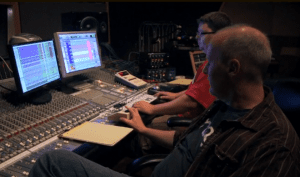
One on One and Group Instruction Syllabus
Below is a basic syllabus for my Music Producer students. The Syllabus can be tailored to specific needs in accordance with individual and class strengths and weaknesses. Obviously, more time can be spent on specific needs in a one on one setting.
Getting to know your Artist
• Musical Genre
• Targeting Textures and Treatments for the Artists Sound
• Focusing Song and Artist Vision
• Understanding the Artist’s Audience
• Listening and Analyzing Comparable Artists
Song treatment
• Every Song is it’s Own Entity
• Explaining and developing Verse and chorus element’s
• The beauty of repetitive themes
• The need for a Bridge if necessary
• Developing melody
• Setting up the Chorus
• Setting up the song to be a Journey
• The Breakdown
• The Climactic Ending
Instrumental Treatment
• Focusing Feel of the Song
• Percussion- Developing drum feel for the song
• Keeping it simple
• Leaving space for the song to develop-Everyone does not need to play All The Time
• Developing Hook lines Instrumentally
• Looking at your Artist ‘s peers Instrumentally
Vocal Performance
• Figuring out the best way to work with your Artist
• Choosing Microphones for you Artist.
• Setting up an Environment for your aAtist Sonically and physically.
• Making sure you understand the Lyrics and meaning of the song and your input into
the performance.
• Vocal Production Techniques
doubling,layering, time based effects, compression, tuning
Technical Subjects
Studio Microphones & Pre-Amps
• Microphones; Styles, types, sounds and applications
• Microphone pre-amps: the hidden magic
• Microphone placement
Equalizers
• How not to overuse
• Frequencies and ear training
• Understanding frequency placement for song arrangement
• Compression:
• What it is and when to use it
• Using it as a weapon
Studio Software – Understanding Pro Tools, Logic, etc…..
• Digital audio
• I/0 and d/a
• Plug ins and uses
• Timing correction
• Tuning possibilities
• Recording and mixing ”in the box”
Mixing
• What is it
• Instruments and frequency ranges
• Levels, panning and spacing
• Using EQ, compression and time based effects to create the atmosphere
for your song.
• Learning the rules the breaking them.